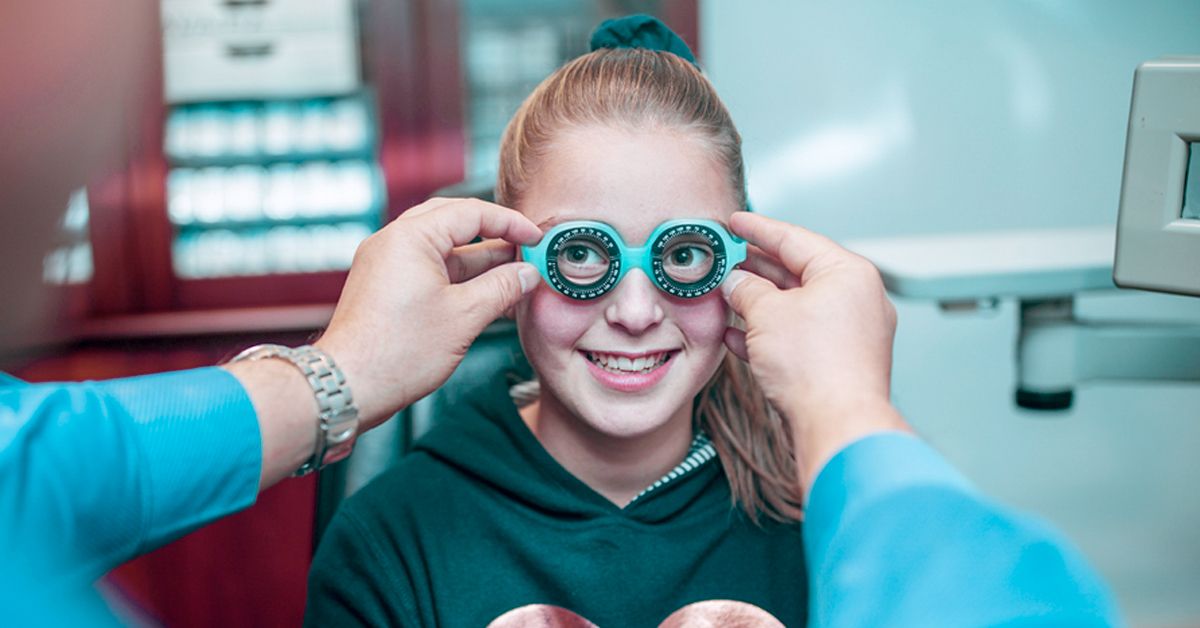Checking Out the most up to date Technological Advancements in Optometry and What They Mean for Eye Doctors
In the ever-evolving area of optometry, current technological developments are reshaping how professionals approach eye treatment. From the accuracy of Optical Coherence Tomography to the nuanced insights provided by AI-driven diagnostic devices, these advancements are setting brand-new standards in person evaluation and treatment. Teleoptometry is poised to redefine accessibility, making certain that expertise goes beyond geographical constraints. As these improvements permeate the method, optometrists are confronted with the obstacle of accepting these devices to enhance individual outcomes. Yet, the inquiry stays: how will these technological shifts redefine the functions and duties within the profession?
Developments in Diagnostic Equipment
Progressing the area of optometry, technologies in analysis devices have actually transformed the method eye care experts examine and identify aesthetic impairments and ocular conditions. The past decade has actually witnessed significant technical innovations, enabling even more exact and thorough analyses. Optical Comprehensibility Tomography (OCT), for instance, supplies high-resolution cross-sectional photos of the retina, permitting the very early discovery of illness such as glaucoma and age-related macular degeneration. This non-invasive imaging technique has actually come to be crucial in modern optometric method.
One more key advancement is the intro of sophisticated corneal topography systems, which map the surface area curvature of the cornea with precision. These devices are specifically useful for suitable contact lenses and identifying corneal problems. Electronic retinal imaging has actually changed traditional ophthalmoscopy, providing in-depth, breathtaking views of the retina that facilitate extensive aesthetic exams.
The development of wavefront aberrometry has also been vital, making it possible for the evaluation of refractive errors with unmatched accuracy (Opticore Optometry). This innovation aids in personalizing corrective lenses and boosting medical outcomes for refractive surgeries. Collectively, these diagnostic advancements empower optometrists to deliver superior patient treatment, making certain very early intervention and tailored therapy approaches, inevitably boosting visual health and wellness outcomes
AI in Patient Monitoring
Structure on the structure of advanced diagnostic devices, the unification of expert system (AI) in client management stands for a transformative leap for optometry. AI systems are increasingly used to improve efficiency, accuracy, and customization in client care. By examining large amounts of data, AI can identify patterns and anticipate possible ocular conditions, allowing eye doctors to tailor interventions extra efficiently. This ability is essential in managing persistent eye diseases such as glaucoma and diabetic person retinopathy, where early discovery and continual surveillance are essential.
In addition, AI-driven platforms assist in streamlined client communications and administrative processes. Automated organizing, digital assessments, and individualized follow-up plans not only enhance client complete satisfaction however additionally optimize time administration for experts. These systems can triage patients based on the urgency of their conditions, ensuring that those in essential need get timely focus.
Furthermore, AI enhances decision-making by offering optometrists with evidence-based suggestions and therapy paths. By incorporating information from digital wellness documents, AI devices supply understandings that educate clinical decisions, decreasing the threat of mistakes and improving patient outcomes. As AI remains to develop, its function in individual monitoring will likely increase, improving the landscape of optometric treatment.
Advancements in Retinal Imaging
In the realm of optometry, retinal imaging has witnessed impressive technical developments that are enhancing analysis abilities and patient treatment. Developments such as Optical Comprehensibility Tomography (OCT) and fundus digital photography have revolutionized just how optometrists visualize and examine the retina.
Improved imaging modalities like OCT angiography are more refining diagnostic precision. This non-invasive method maps blood circulation in the retina, supplying vital insights into vascular wellness without the need for dye injections. Additionally, adaptive optics innovation is being integrated into retinal imaging systems to correct ocular aberrations, supplying extraordinary picture clarity. Such improvements help with the recognition of min retinal modifications that could symbolize disease progression.
Furthermore, developments in fabricated intelligence are enhancing retinal imaging by allowing automatic evaluation of huge datasets. These systems assist optometrists in determining patterns a sign of pathology, therefore boosting analysis accuracy and efficiency. Collectively, these developments are transforming retinal imaging into a foundation of modern-day eye treatment, boosting outcomes and broadening therapeutic possibilities.
Teleoptometry's Growing Duty
Teleoptometry is significantly ending up being a crucial component of eye treatment, driven by improvements in digital communication and analysis tools. This is particularly valuable in underserved and rural locations where access to specialized eye treatment is commonly restricted.
The integration of man-made intelligence (AI) more improves teleoptometry, making it possible for the evaluation of visual data and aiding in the detection of ocular problems such as glaucoma and diabetic retinopathy. AI-powered algorithms can rapidly translate complicated imaging data, providing eye doctors with valuable insights that reinforce professional decision-making.
Additionally, teleoptometry supports continuity article of treatment through smooth assimilation with electronic health records (EHRs), enabling optometrists to preserve extensive client backgrounds. This ensures that individuals receive customized and constant treatment even when talking to different experts.
In spite of these advantages, difficulties continue to be, consisting of guaranteeing information safety and taking care of client assumptions. Teleoptometry represents a significant stride towards more accessible, effective, and patient-centered eye treatment. As innovation progresses, its duty is positioned to broaden additionally.

Future Fads in Eye Treatment
A myriad of innovative trends is readied to reshape the future of eye care, driven by technological developments and the advancing demands of people. One substantial trend is the combination of man-made intelligence (AI) in diagnostics, which promises to enhance the precision and effectiveness of eye assessments. AI algorithms can analyze large amounts of data from retinal photos, possibly finding problems like diabetic person retinopathy and glaucoma earlier than standard methods.
In addition, personalized medication is getting traction in optometry, with hereditary screening educating personalized treatment strategies. This strategy intends to enhance patient end results by tailoring treatments to individual hereditary profiles. Wearable innovation, such as smart contact lenses, is additionally on the horizon, offering real-time surveillance of intraocular pressure or sugar levels, hence offering continual insights right into ocular and systemic health and wellness.
The fostering of enhanced fact (AR) and online fact (VR) in training and person education is an additional emerging fad. These innovations offer immersive experiences that can improve understanding and abilities both for individuals and optometrists. As these fads develop, optometrists should remain abreast of technological advancements to provide sophisticated care, making sure improved client end results and complete satisfaction in the vibrant landscape of eye care.
Final Thought

Collectively, these diagnostic innovations equip optometrists to supply premium individual care, making certain very early intervention and tailored therapy strategies, ultimately boosting visual health results.

As these technologies why not try these out continue to progress, eye doctors need check this site out to adapt and include them into method, inevitably optimizing workflow performance and boosting the requirement of eye treatment supplied to patients.
Comments on “Leading Reasons to Visit an Optometrist Chino for Your Eye Health”